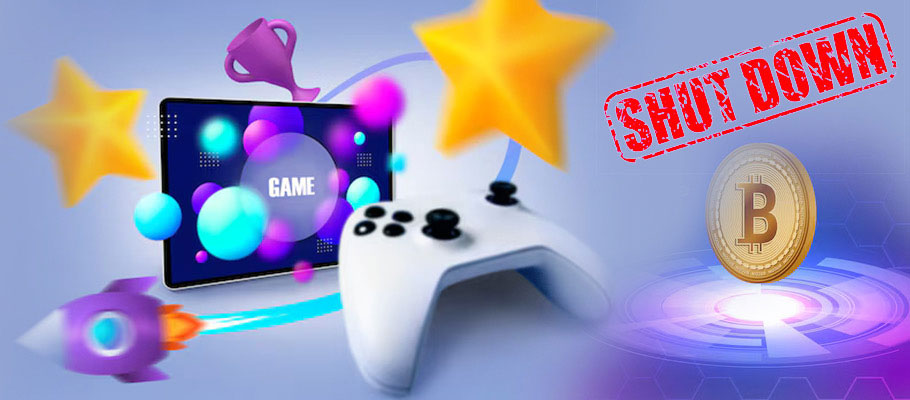
Published: July 16th, 2025
Crypto gaming has experienced a raft of high-profile project failures recently with top names like Deadrop being left for dead after years of hype, token sales, and internal upheaval.
Experts blame an over-reliance on tokens and a flawed fundraising ecosystem that puts too much pressure on new projects as they try to establish sustainable traction with end users.
Popular crypto game Deadrop, the brainchild of gaming streamer Dr. Disrespect, seemed to have substantial backing but collapsed in January after the influencer was removed from the project's leadership team on allegations of misconduct.
Another example is Solana cat-mech robot shooter Nyan Heroes. It quickly gathered a 250,000+ user base, but shuttered in late May when project funding ran out.
Its closure was followed by other seemingly popular crypto games like MetalCore, OpenSeason, Blast Royale, Lords of Light, Mojo Melee, and others. All gone.
Speaking at a recent blockchain developer conference, Kenneth Kim, head of strategy at game development house Nexpace, said investors were more naive when crypto gaming started gaining in popularity in 2021.
Back then the crypto gaming market was a mish-mash of random blockchain games with tokens and NFTs attached. It was novel and new, so VC funding was easier to obtain and users were keen to sign up and try things out.
‘People didn't really understand the challenges and underlying business model driving these games, so sustainability, revenue, and all these types of things fell out of focus.’
Kim added that games still routinely issue tokens and NFTs before games are really ready, sometimes when they are still at concept stage. Getting refunds on worthless tokens and NFTs when gaming projects collapse is very rare, he said.
After Deadrop's demise, players were told to claim refunds through their bank or credit card providers. That left refunds at the discretion of financial institutions, and many players were unsuccessful.
In May, Avalanche-based battle royale shooter Off the Grid started moving players onto the mainnet of its proprietary GUNZ blockchain, where they could trade GUN tokens for in-game NFT items.
Despite only a fraction of the user base being able to make trades, transaction volume heated up quickly, with some items selling for thousands of dollars' worth of crypto.
The sudden uptick came as the popular Web3 multiplayer prepared to expand onto the Steam PC platform, which banned blockchain games back in 2021.
Fans have noted that Steam's listing for Off the Grid said it would feature an in-game marketplace, potentially a reference to crypto functionality.
At the time there were 16.4 million active crypto wallets on GUNZ, a new Avalanche L1 network designed to host Off the Grid and other games from developer Gunzilla Games. Meanwhile, just 21,000 players have been moved onto the fully-functional mainnet, roughly 0.13 percent of the player base.
Even with that fractional liquidity, some sizable trades had already taken place. A tactical vest sold for USD 2,390 in late May while a gas mask traded hands for around USD 1,100.
In May 2024, crypto markets saw three billion USD in token unlocks across seven crypto projects. Data from analytics firm TokenUnlocks showed the two biggest came from the Pyth DeFi oracle network and the Aevo crypto derivatives platform.
New crypto projects typically release their supply of tokens incrementally over weeks, months or years. Bitcoin, for example, has released 19.7 million into circulation from a total supply of 21 million. The ‘tokenomics timeline’ is usually documented in a white paper accompanying the project's launch.
May 2024 also saw the much-watched DeFi oracle network Pyth activate its first unlock, just six months after its original go-to-market date. On 20th May 2024, 2.13 billion in PYTH tokens arrived in the market, making the value of the unlock around USD 1.24 billion.
Fifty per cent of the tokens fund ecosystem growth, 25 percent went towards publisher rewards, while the remaining quarter were auctioned off through private sales to support protocol development.
TokenUnlocks called the Pyth plan a cliff unlock, meaning a mass of tokens were released all at once rather than incrementally across days. Pyth plans another 2.13 billion unlock in June 2025.
Aevo took a different route for its unlock, combining both a cliff unlock and a linear unlock, where a specific number of tokens are released daily.
Some 827.6 million AEVO tokens worth ca. USD 1.24 billion were unlocked on 15th May 2024. Another 6.13 million worth USD 9.20 million were then released each day for the following nine days.
On 22nd May 2024, Avalanche released 9.54 million AVAX tokens worth ca. USD 329.18 million. Memecoin unlocked 5.31 billion MEME tokens worth ca, USD 147.94 million on 3rd May, while another 49.47 MEME tokens worth ca USD 1.38 million flowed into the market each day for the following 184 days.
A number of liquid staking tokens enjoyed significant gains in the early days of 2023 as a deadline for un-staking Ethereum approached. Data from Cryptotracker shows Rocket Pool (RPL) and Lido Finance (LDO) both saw notable gains.
LDO was the governance token behind Lido Finance, Ethereum's biggest liquid-staking protocol. It gained more than 17 per cent in 48 hours. Intense buying and selling of LDO pushed its daily volumes up across numerous exchanges to hit USD 275 million, a 434 per cent leap.
With a market cap just north of USD 1.5 billion, data from CoinGecko had LDO at 33th-place on its list of the largest cryptocurrencies.
Data from Coinglass showed that more than USD 1.6 million in LDO futures were liquidated between Sunday 8th January and Monday 9th January 2023. The majority (ca. 65 per cent) came from blow-off short trades.
The first week of January 2023 was a rewarding one for Lido Finance. LDO became the number one decentralized application when ranked by total value locked (TVL), knocking DAI creator MakerDAO out of the top spot.